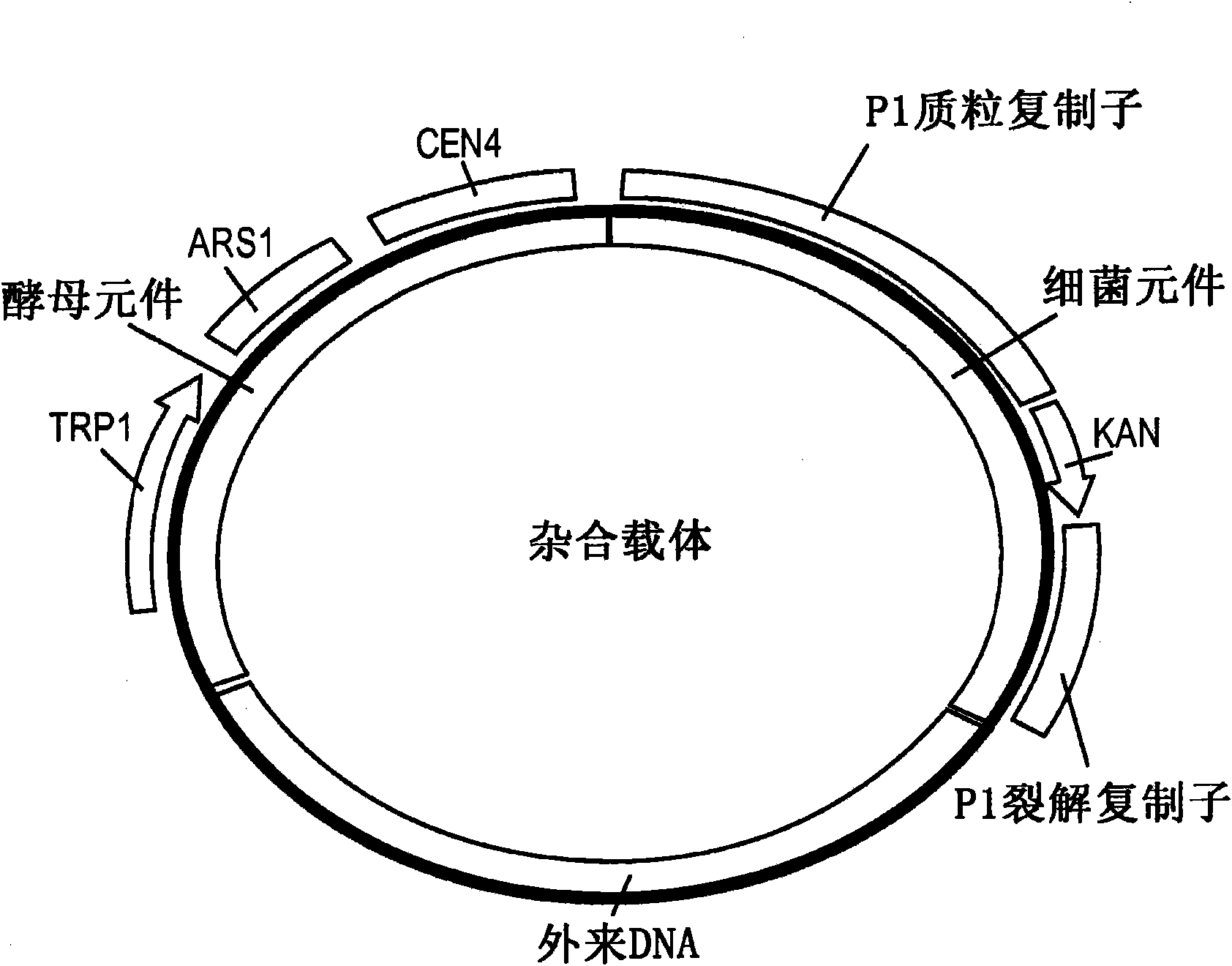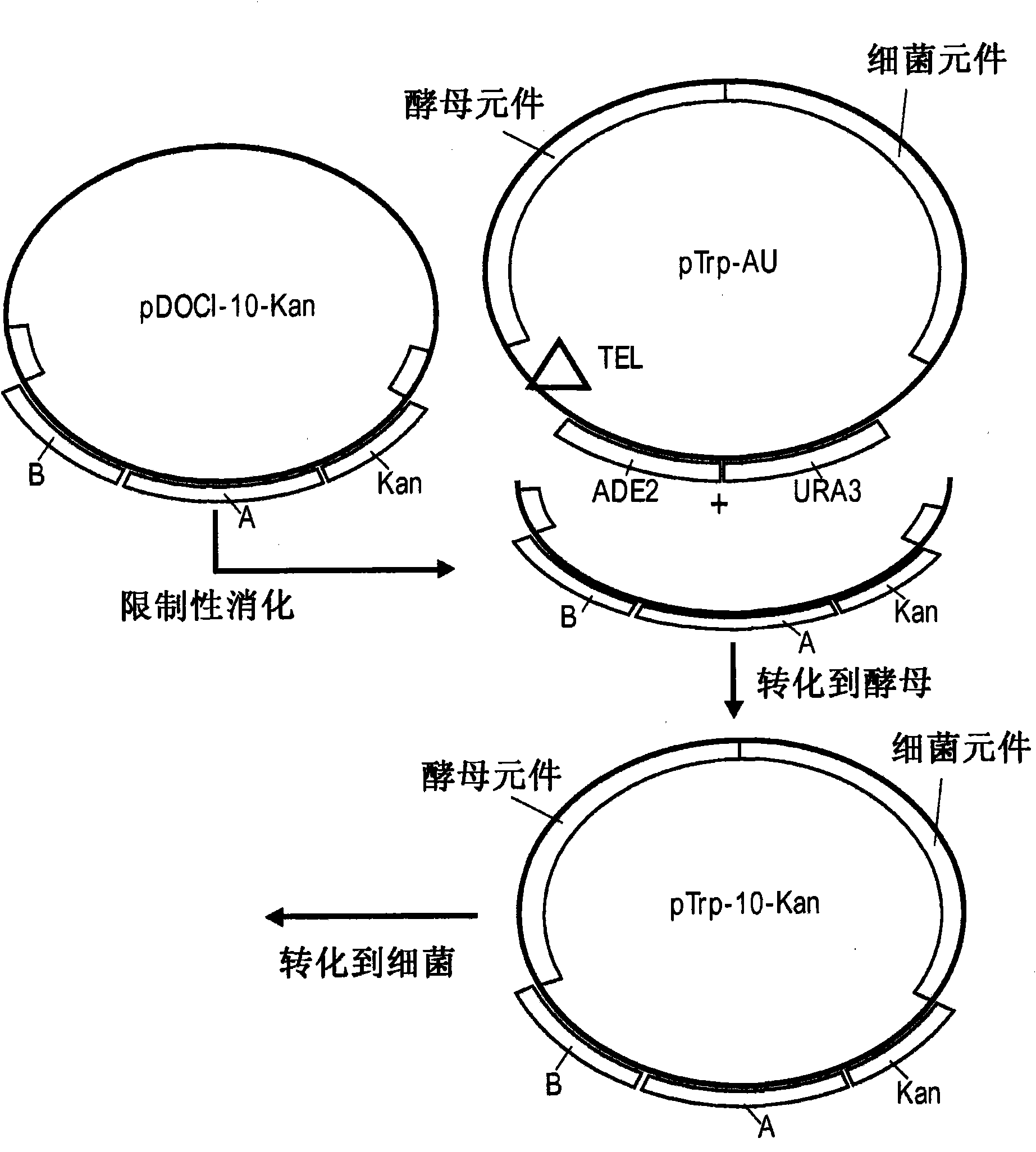System for capturing and modifying large pieces of genomic DNA and constructing organisms with synthetic chloroplasts
An organism and chloroplast technology, applied in recombinant DNA technology, the use of vectors to introduce foreign genetic material, sugar derivatives, etc., can solve problems such as carrier limitation, increasing the complexity of genetically engineered plants and algae, and complex chloroplast translation.
- Summary
- Abstract
- Description
- Claims
- Application Information
AI Technical Summary
Problems solved by technology
Method used
Image
Examples
Embodiment 1
[0145] Example 1: DNA purification and analysis
[0146] DNA is isolated and analyzed according to methods known in the art.
[0147] To prepare DNA from Chlamydomonas reinhardtii for use as a template for PCR, 10 6 Algal cells (from agar plates or liquid media) were suspended in 10 mM EDTA and heated to 95°C for 10 minutes, then cooled to approximately 23°C. This solution was added directly to the PCR mix.
[0148] To prepare purified chloroplast DNA from Chlamydomonas reinhardtii, 5 × 10 8 Algae cells were washed once with water, centrifuged at 3000×g for 10 min, and resuspended in 10 mL of lysing solution (10 mM Tris pH=8.0, 10 mM EDTA, 150 mM NaCl, 2% SDS, 2% sodium lauryl creatine and 25ug / mL pronase (Roche)) and incubated at 37°C for 1 hour. The lysate was then gradually extracted with phenol / chloroform, followed by two chloroform washes. Total DNA was isolated by ethanol precipitation and resuspension in resuspension buffer (10 mM Tris pH=7.4, 1 mM EDTA and 0.1 m...
Embodiment 2
[0155] Embodiment 2: transformation method
[0156] E. coli strain DH10B or Genehog were prepared as electrocompetent cells by the following steps: Cells were grown to an OD of 0.7 600 , then collected and washed twice with ice-cold 10% glycerol, snap-frozen in a dry-ice ethanol bath and kept at -80°C. All yeast or algal DNA was prepared in a Bio-Rad Gene Pulsar Electroporator using, for example, a 0.1 cm cuvette at 1,800 V, 200 ohms and 25 mF and electroporated into E. coli. Cells were recovered and clones were selected in agar growth medium containing one or more antibiotics such as kanamycin (50 ug / mL), ampicillin (100 ug / mL), gentamicin (50 ug / mL ), tetracycline (51ug / mL) or chloramphenicol (34ug / mL).
[0157] Yeast strains YPH857, YPH858 or AB1380 can be transformed by methods such as Sheistl & Geitz (Curr. Genet. 16:339346, 1989) and Sherman et al., "Laboratory Course Manual Methods in Yeast Genetics" (Cold Spring Harbor Laboratory Press, Cold Spring Harbor, 1986), ...
Embodiment 3
[0160] Example 3: A heterozygous gap-filling vector capturing the chloroplast genome
[0161] In this example, a system was established using a heterozygous gap-filler vector that captures chloroplast DNA (Fig. 1). The hybrid gap-filling vector backbone contains yeast elements allowing it to function as a yeast artificial plasmid (YAP) and bacterial elements allowing it to function as a plasmid artificial chromosome (PAC). Yeast elements include yeast selectable marker sequences (such as TRP1 or LEU2), yeast centromere sequences (CEN), and yeast autonomously replicating nucleotide sequences (ARS). Bacterial elements include P1 or bacterial origin of replication sequences and bacterial selectable marker sequences such as Kanr.
[0162] To manipulate the hybrid gap-filling vector, the vector pDOCI (SEQ ID NO. 1) was generated. Part of pTRP-AU ( figure 2 ) is amplified using a PCR primer pair that anneals to sites surrounding the region comprising TEL, ADE2 and URA3. One p...
PUM
 Login to View More
Login to View More Abstract
Description
Claims
Application Information
 Login to View More
Login to View More - R&D
- Intellectual Property
- Life Sciences
- Materials
- Tech Scout
- Unparalleled Data Quality
- Higher Quality Content
- 60% Fewer Hallucinations
Browse by: Latest US Patents, China's latest patents, Technical Efficacy Thesaurus, Application Domain, Technology Topic, Popular Technical Reports.
© 2025 PatSnap. All rights reserved.Legal|Privacy policy|Modern Slavery Act Transparency Statement|Sitemap|About US| Contact US: help@patsnap.com



